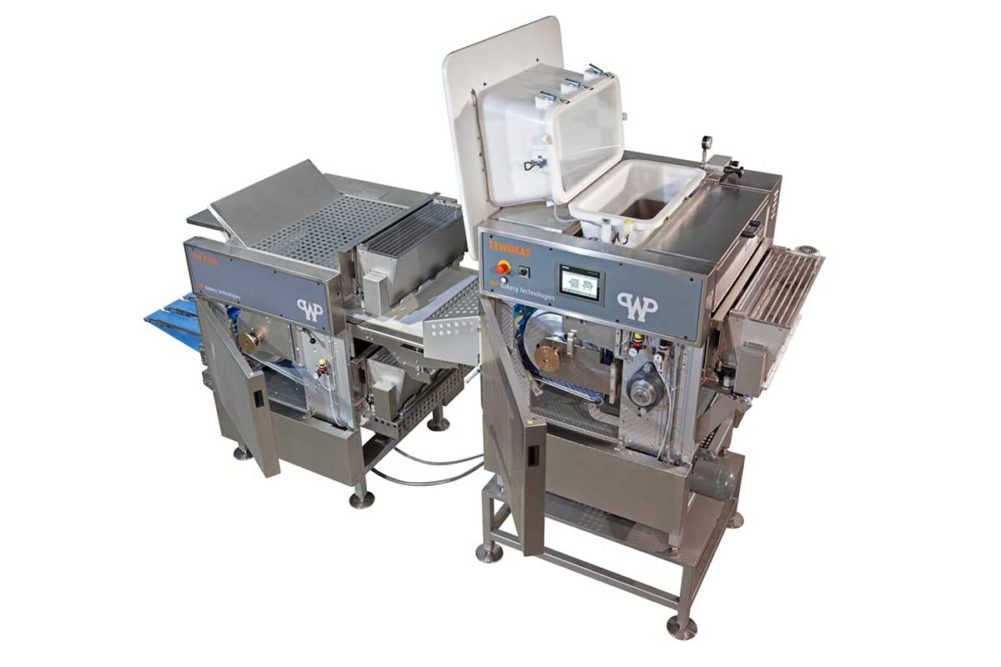When it comes to reducing waste, pizza manufacturers should target their topping lines for automation, which also eliminates unnecessary labor and gets the biggest bang for their bucks.
Tom Trost, sales manager, Quantum Technical Services, said recent advances in technology include hopper pump assemblies that pump sauce from a large tote via a signal from the hopper’s level sensor as opposed to manually feeding the sauce applicator hopper.
Moreover, sauce depositors can match exact pattern requirements while pepperoni, sliced mozzarella or pieces of Canadian bacon can be precisely placed across crusts that come in a variety of shapes and dimensions.
“We customize those patterns for them, so if they’re doing a 16-inch round pizza, and then they also have another SKU that’s a 10-inch square pizza, we can just make another pattern for them,” Trost pointed out. “They don’t necessarily need a new line for that unless they’re going to a larger size and their volume is increasing — then you have to consider a new line.”
With the Smart Applicator by AMF Tromp, digital imaging technology is combined with artificial intelligence and machine learning to make a smarter, more efficient and productive topping process that reduces topping waste and increases profitability, noted Hans Besems, executive product manager, AMF Tromp, an AMF Bakery Systems brand.
“By taking digital images of each pizza product, machine parameters are automatically adjusted to ensure the consistent distribution of toppings on each pizza product to meet exact specifications for maximum product quality and unmatched product consistency,” he said. “Digital images are used for quality control and across shift benchmarking, making it easier to detect, find, track and trace quality issues without losing complete runs of product, resulting in less waste and improving food safety.”
He added that the Powershot Depositor by AMF Tromp accurately deposits tomato and white sauces onto crusts or flatbreads on high-speed production lines.
“For maximum versatility, customized depositing heads are engineered to meet each producer’s exact shape or size pizza,” Besems explained. “For simple changeover, the depositing image is adjustable, eliminating the need to adjust the height of the depositing head for each product.”
Meanwhile, Gemini Bakery Equipment provides flexible sauce depositing technology through its partnership with FoodJet.
“A series of depositor heads controlled by vision technology can be programmed to deposit sauce with a great deal of precision and accuracy on randomly placed products. Product registration is not required,” said Ken Johnson, Gemini’s president. “Changeovers to other preprogrammed crusts of various shapes and sizes are accomplished with a tap on the HMI screen.”
Quantum integrates cheese shredders to automatically feed the topping to a waterfall applicator using a hopper level sensor. Trost said this process ensures a steady state of ingredients in the system to minimize waste.
“There’s big savings because cheese is the most expensive topping so that’s where we’re constantly being asked how to save waste and labor,” he noted.
Bulk feed conveyors are available to meter toppings into the waterfall topping applicators using a hopper level sensor to control the process. These systems hold a large volume of toppings so one operator can easily load multiple bulk feeds as opposed to one person loading each waterfall individually, Trost observed.
Overall, Johnson noted, new pizza production lines offer advances in control components that provide improved precision, weight control, enhanced productivity and labor savings.
Randy Kelly, applications specialist, Fritsch, a Multivac Group company, noted digital controls provide easier and more intuitive operation, which is a critical benefit with the current lack of skilled labor.
“The key is to minimize the prerequisites for prior knowledge of their operation and, wherever possible, to have the software prevent input errors,” he said.
Digital systems can dramatically reduce changeover times, especially on long sheeting lines with various reduction stations, cross rollers, cutters and more.
“Speed and thickness adjustments can be made easily using today’s technology,” said Nick Magistrelli, vice president of sales, Rademaker USA. “The changeover process has dramatically improved with digital controls, with the ability to store multiple recipes in the program. The systems today are providing real-time data to the operators, creating more efficient production and improving product quality.”
On pizza topping lines, Trost said, recipe management and central controls are operated from one or two locations using strategically placed PLC pedestals. Often the controls are placed away from the line to allow for washdown and sanitation.
In addition, he said, wireless communication and self-diagnostics are improving, which can pinpoint which machine needs maintenance to reduce downtime.
This article is an excerpt from the November 2023 issue of Baking & Snack. To read the entire feature on Pizza Processing, click here.





